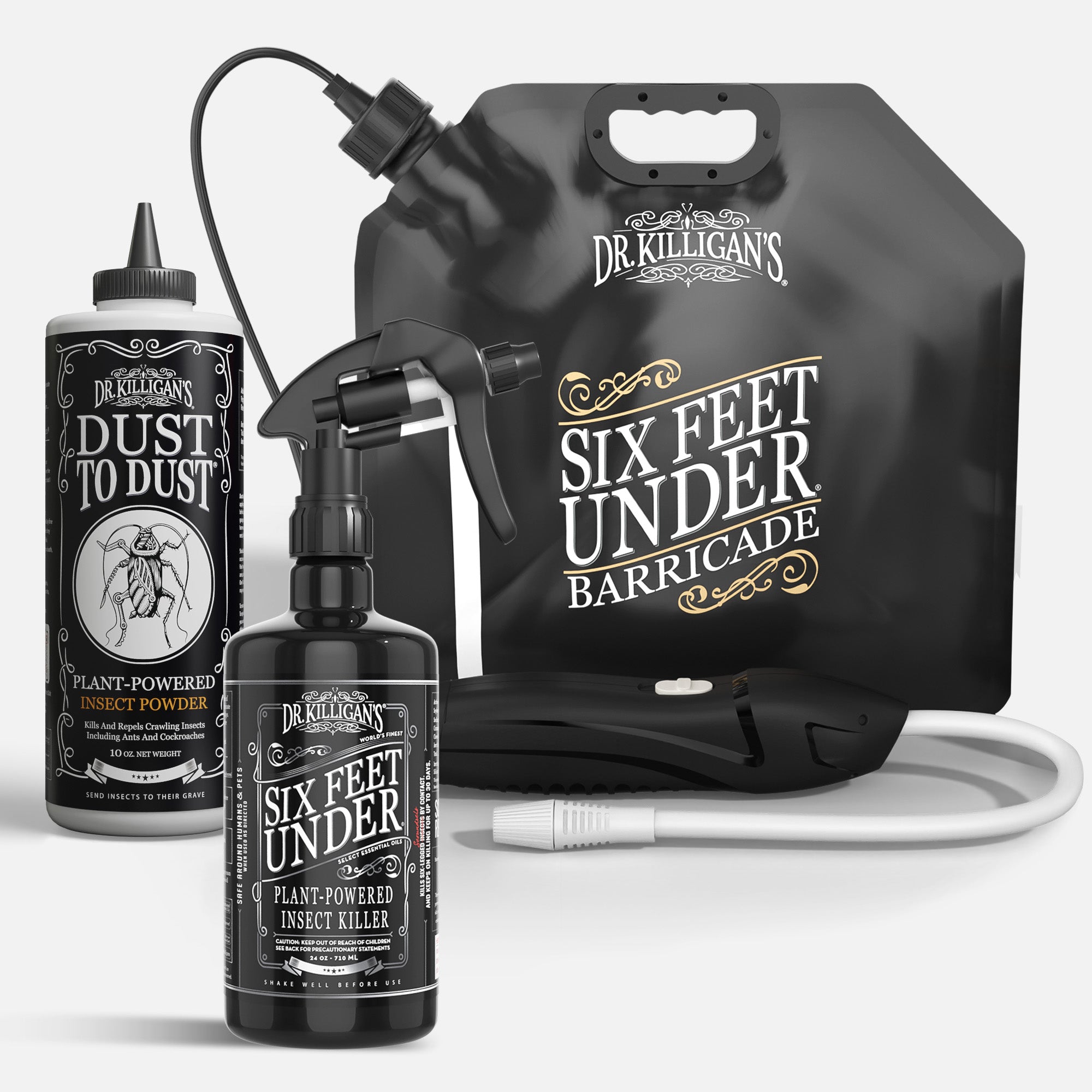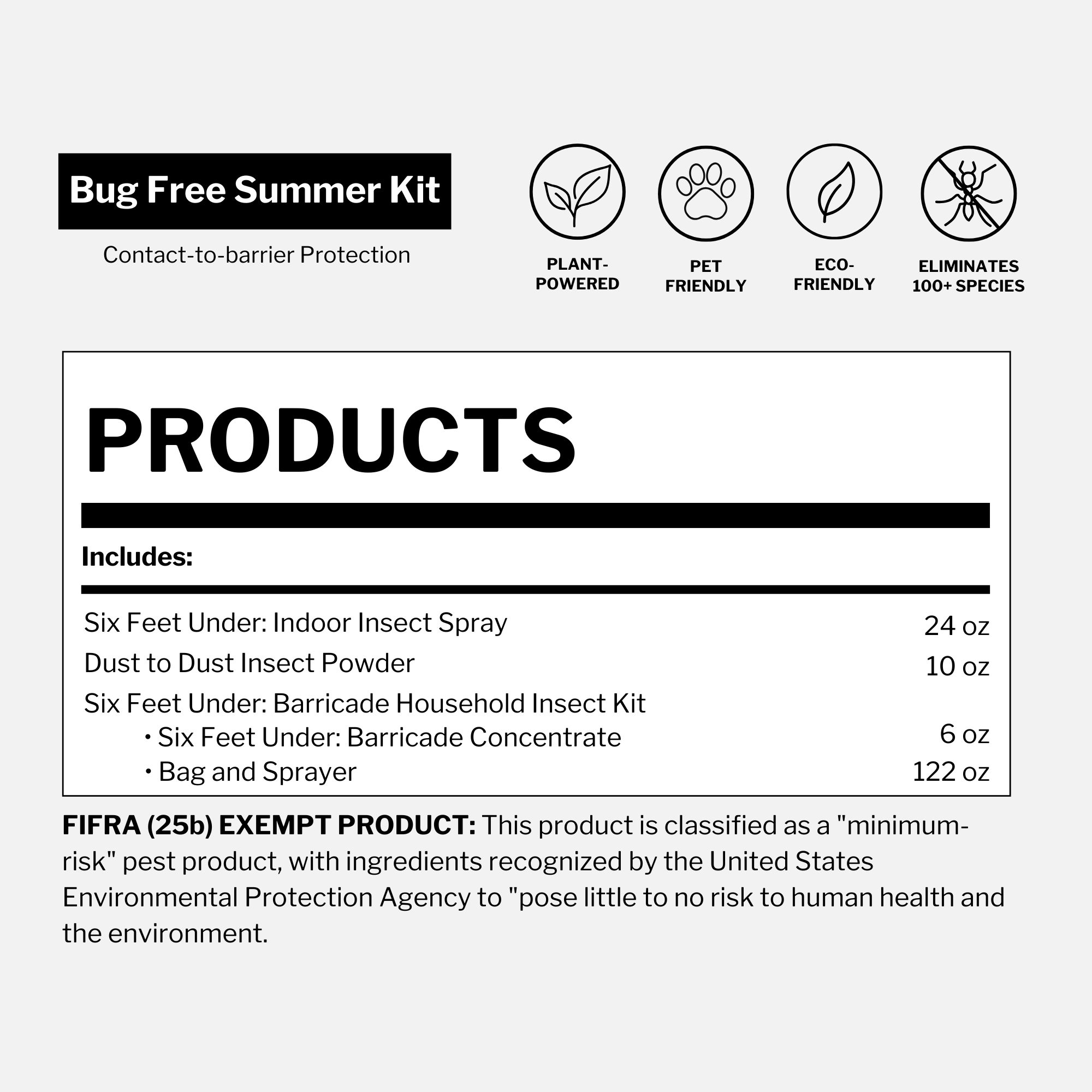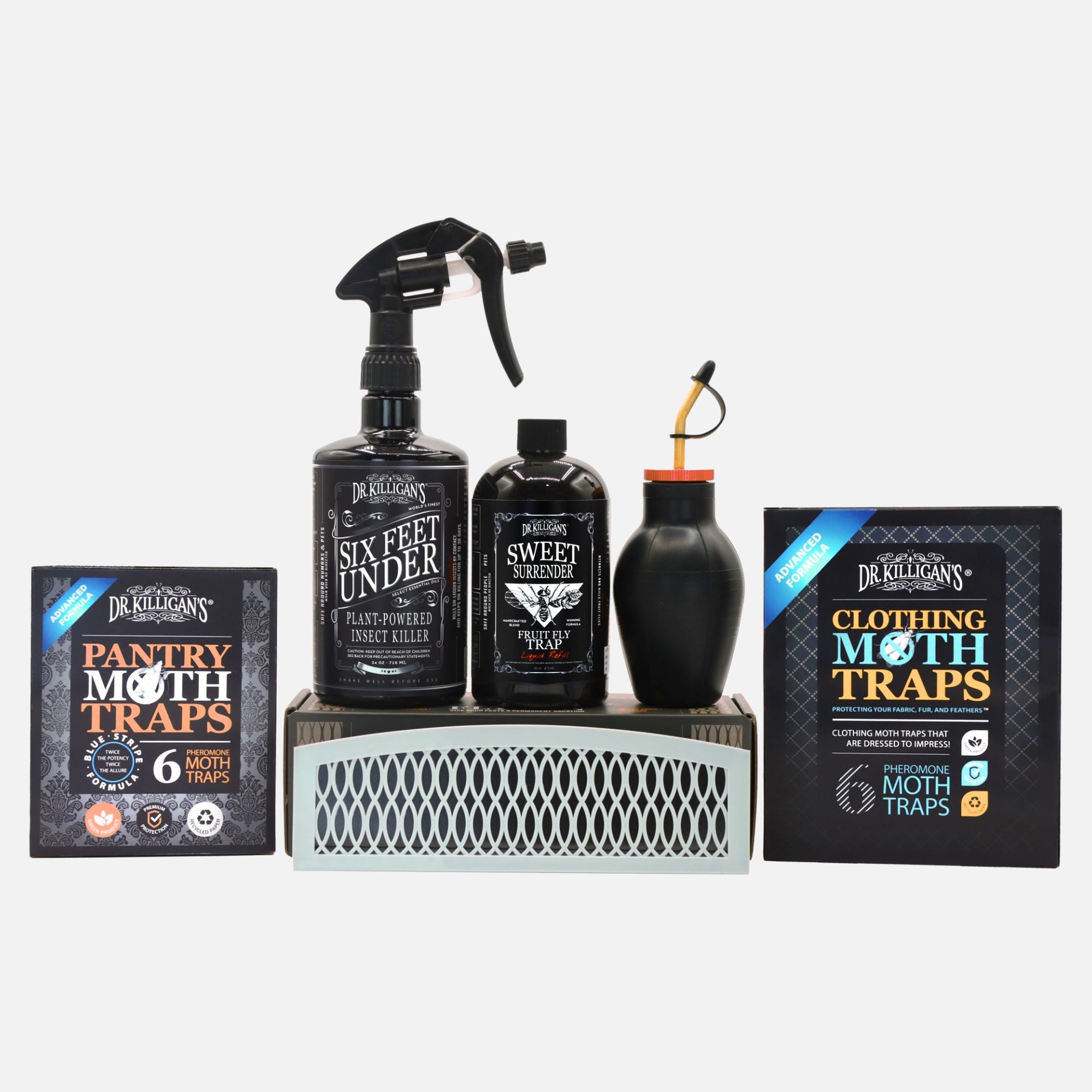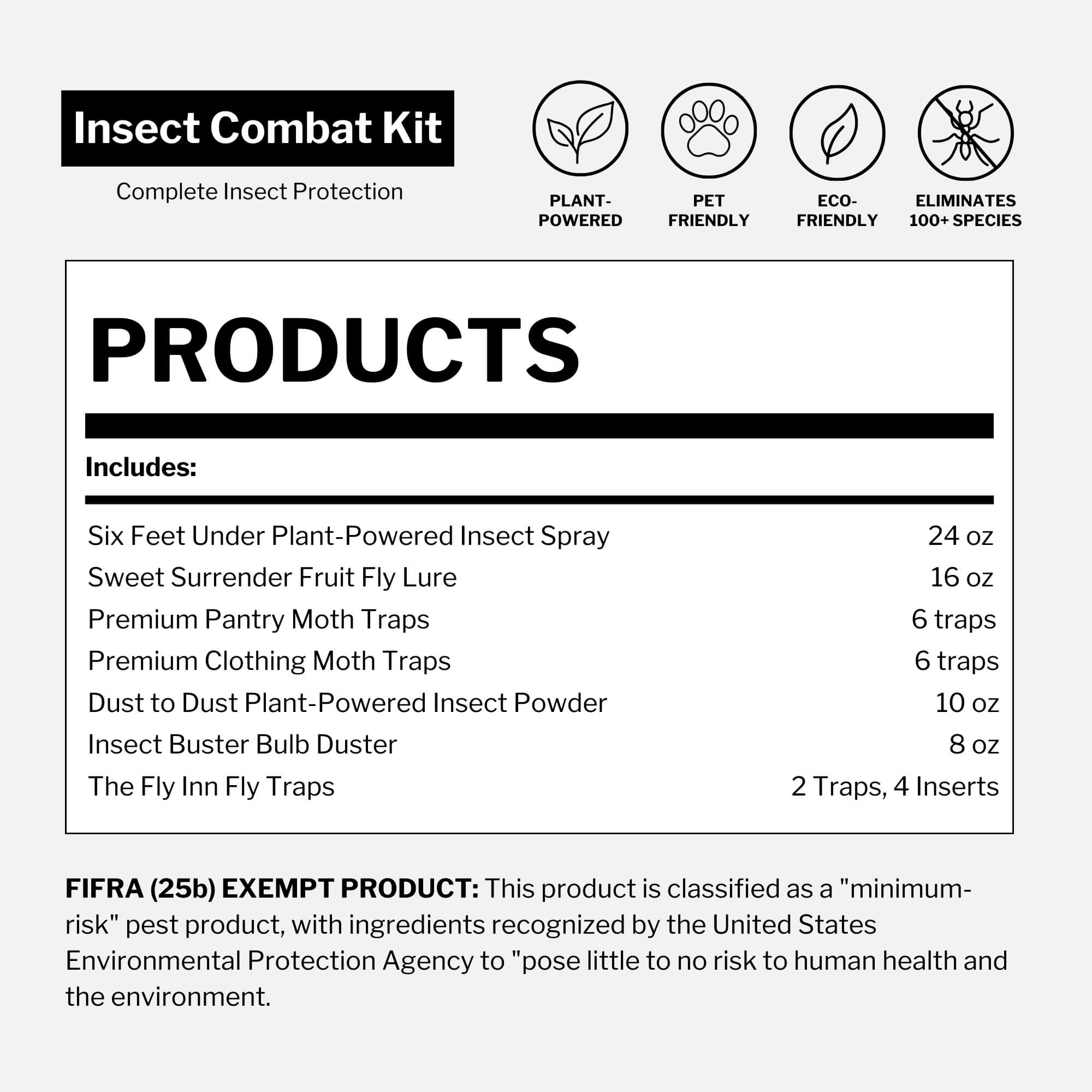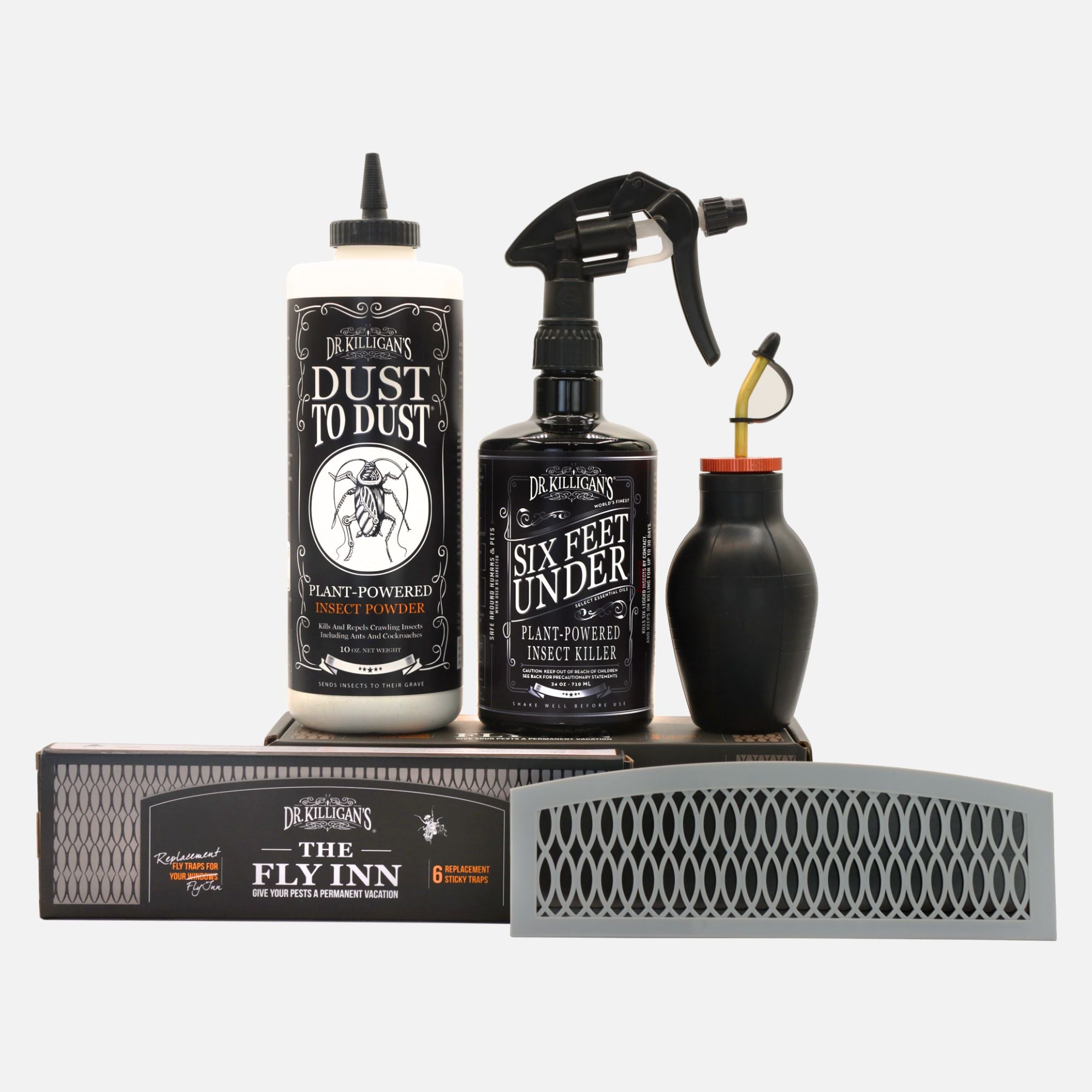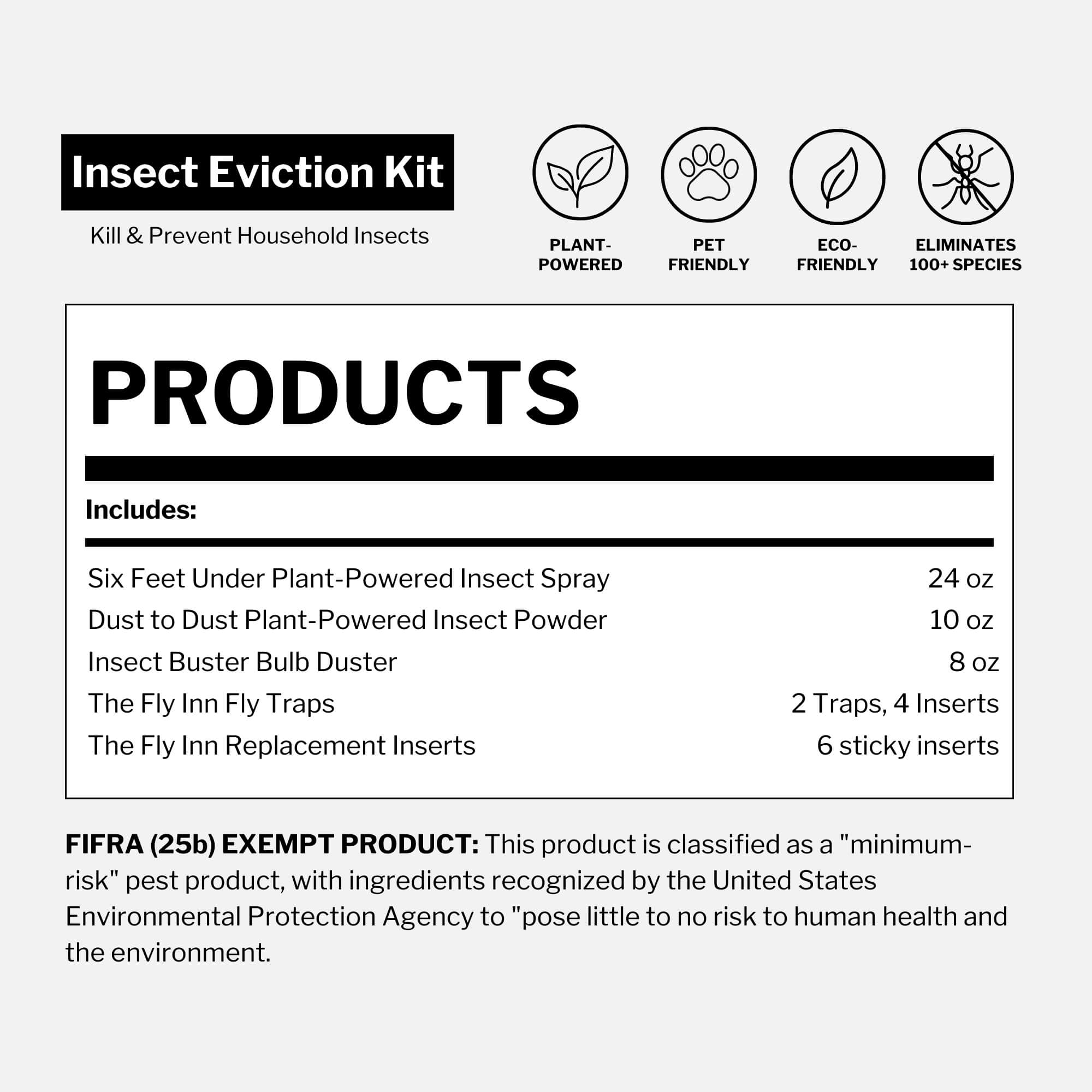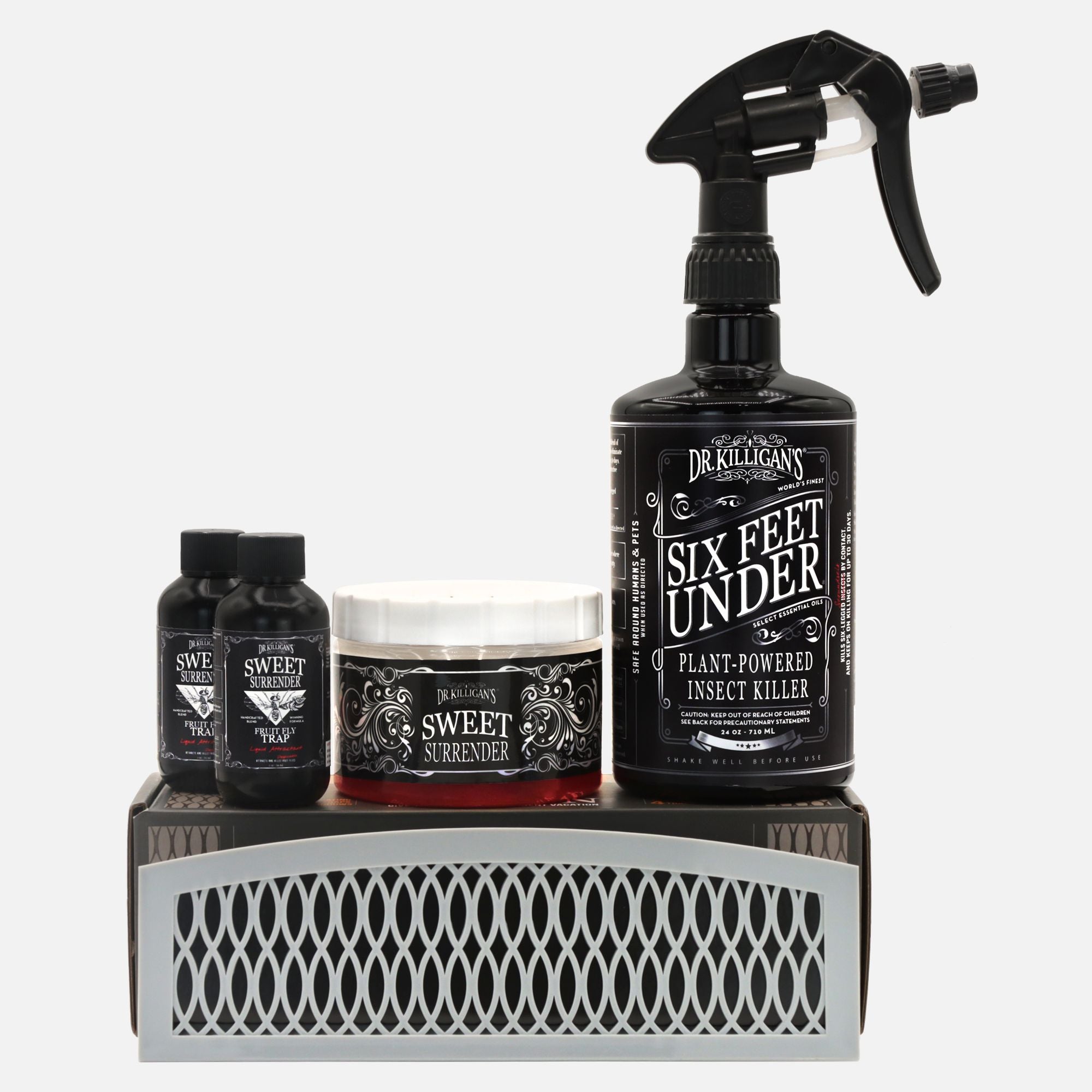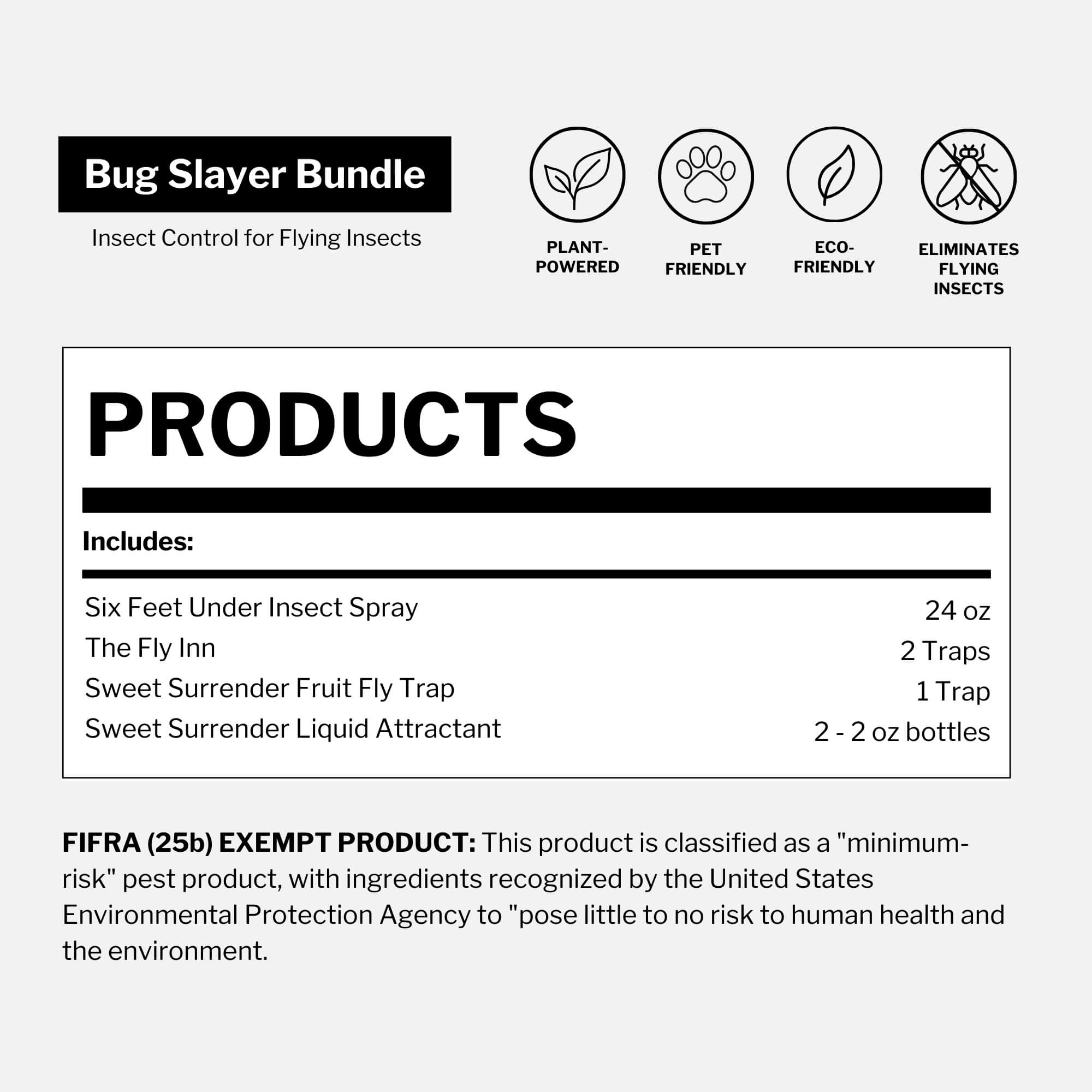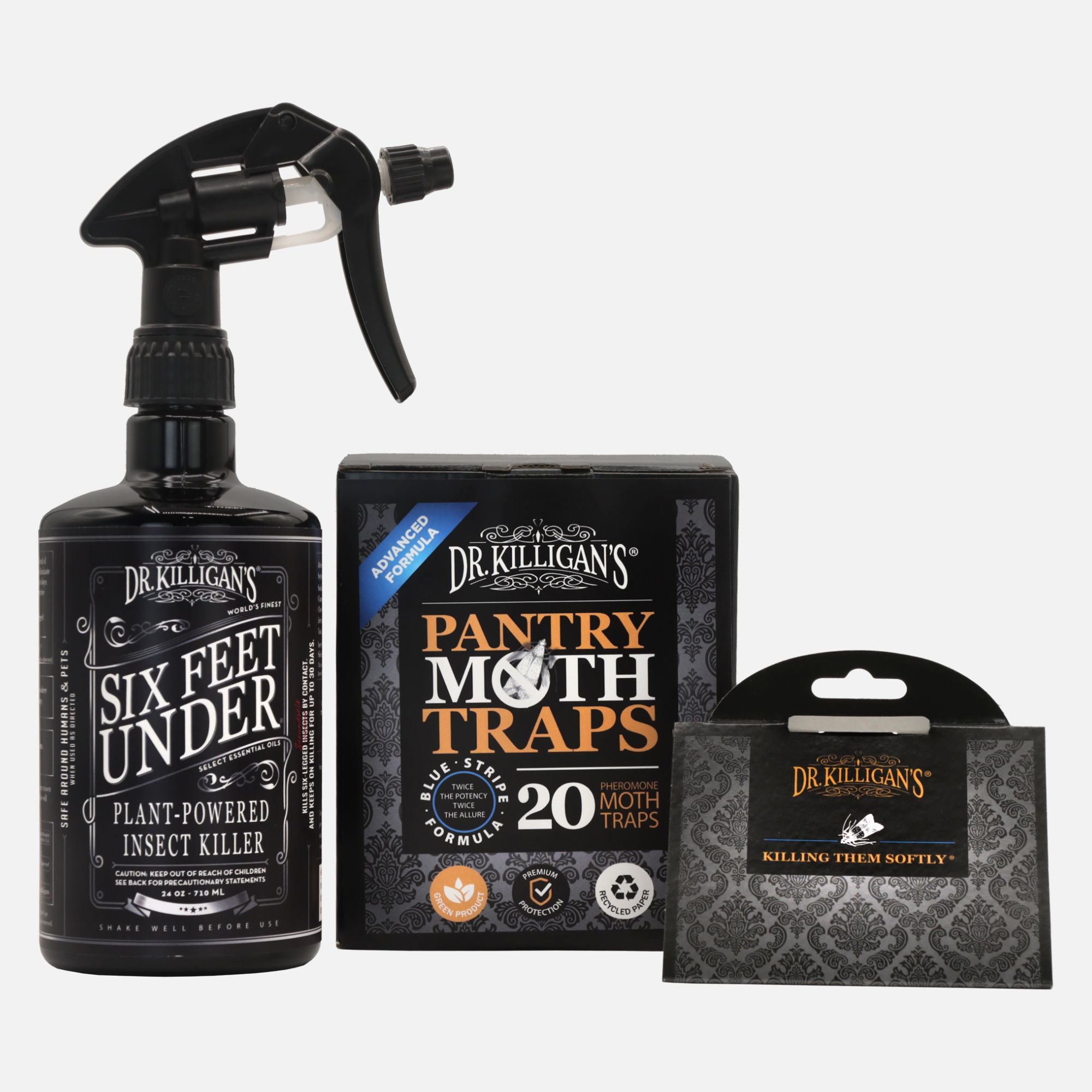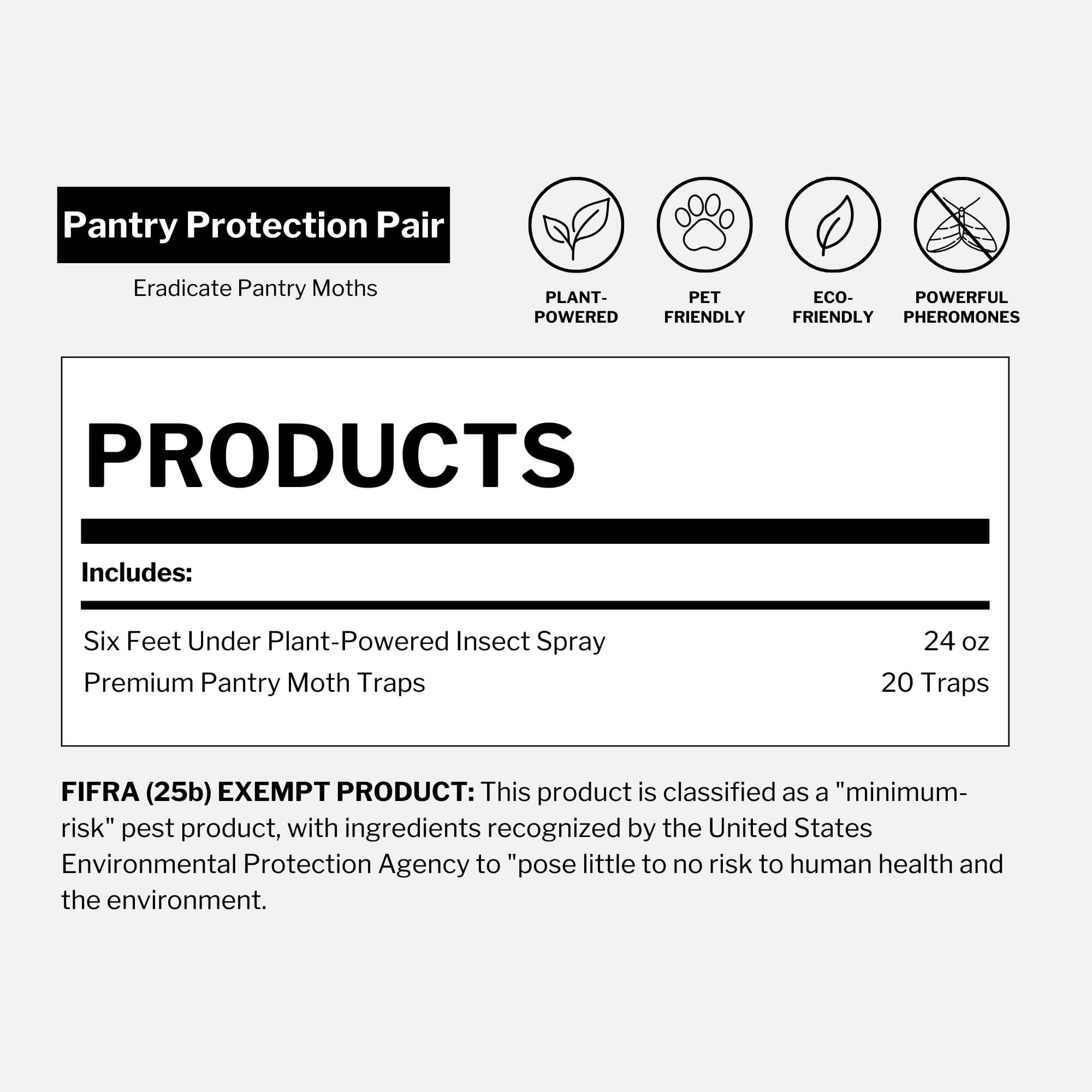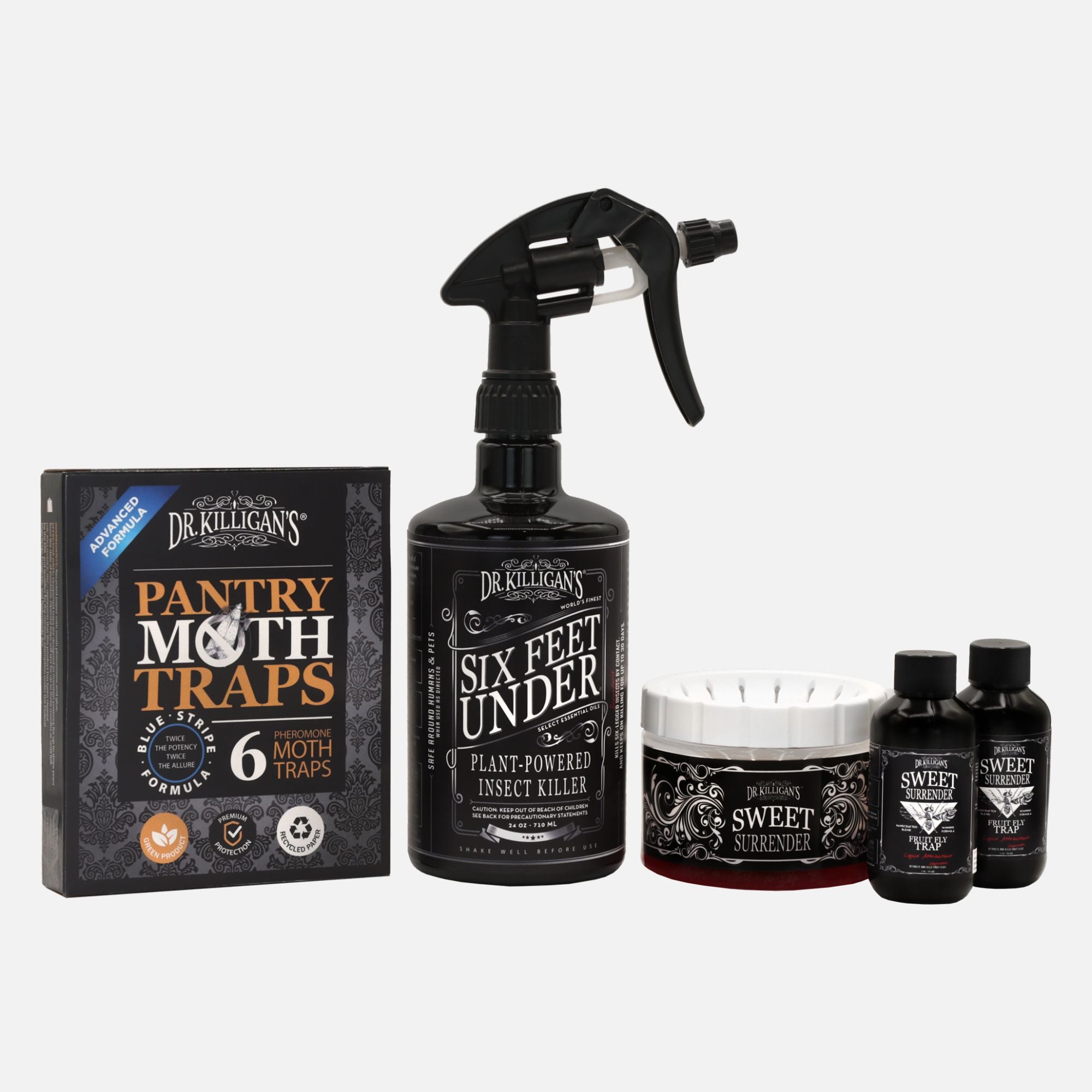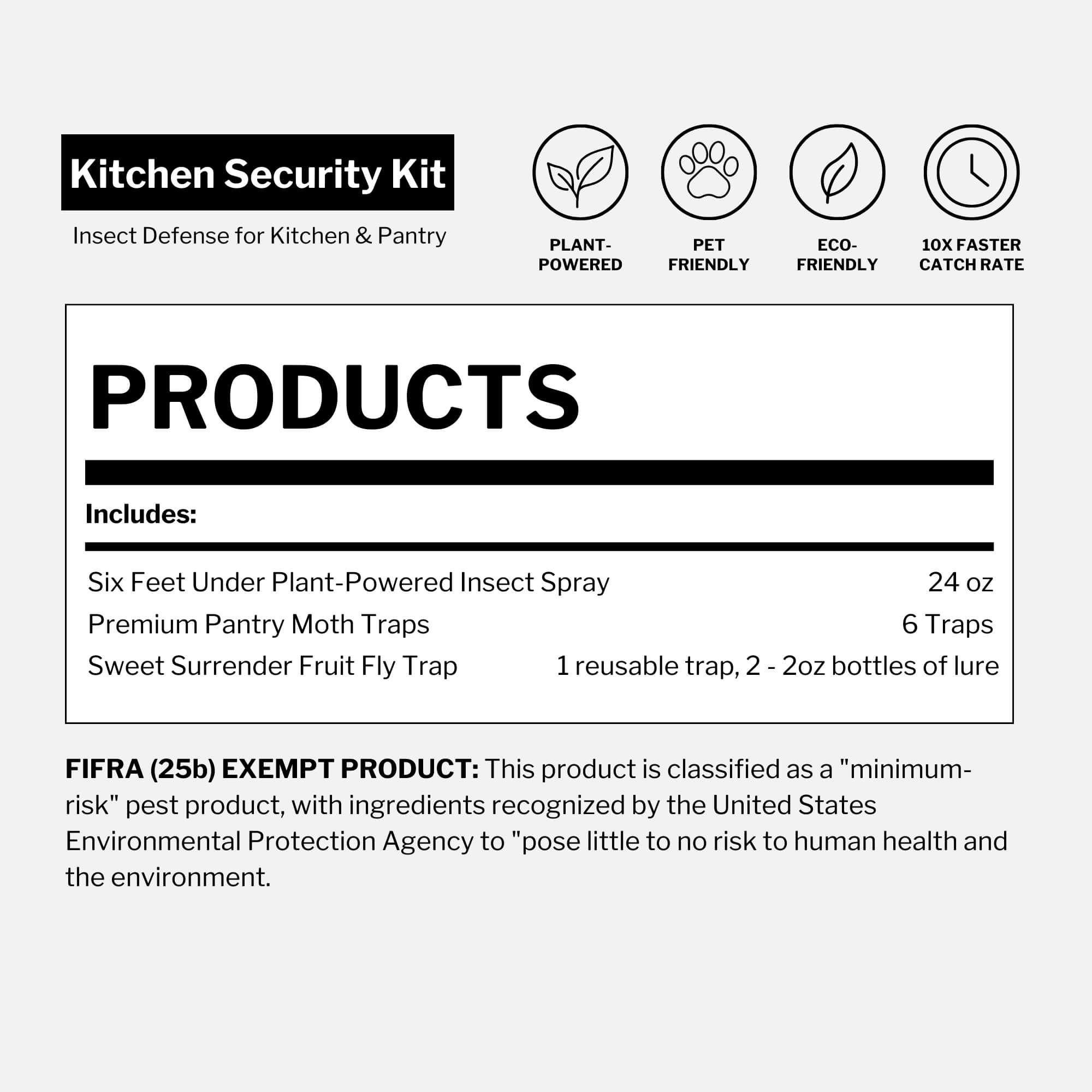Updated October 10, 2025
Wondering why there are houseflies in winter? Many houseflies slip indoors in fall and overwinter in warm, quiet spots. Others breed in hidden organic residues. To get rid of houseflies in winter: seal entry points, remove attractants, trap at sunny windows with The Fly Inn and spot-kill with Six Feet Under Plant-Powered Insect Spray—then prevent with simple weekly habits.
Where do flies go in the winter?
Outdoors, many flies slow down, shelter in protected places or die off. In towns and neighborhoods, warmed buildings change the game: flies ride in during fall, rest in wall voids, attics and garages, then “wake up” when heat and sunlight return—so they appear on warm winter afternoons at windows and doors.
Curious how cold snaps and warm spells change fly behavior? See how weather affects flies
Why you’re seeing flies in your house in winter (4 reasons)
1. Hidden havens (indoor breeding)
Houseflies lay eggs on warm, moist, decaying organic matter. In winter, tiny overlooked residues can sustain a small population.
Common hotspots to check

- Behind and under appliances, where crumbs and grease collect
- Inside bin lids, compost caddies and mop buckets
- Recycling zones with “sticky” bottles or cans that weren’t rinsed
- Shadowy corners of seldom-used cabinets and pantry shelves
- Under heavy furniture and along baseboards, where dust and food specks settle
Fix
- Empty and wash bins and lids; dry before relining
- Rinse containers before recycling; don’t let “sticky” items sit
- Wipe grease and sugary residues near stoves, sinks and splash zones
- Pull out appliances for a quick sweep and wipe of the floor and wall edge
- Declutter low shelves and corners so crumbs don’t accumulate
2. Warmth seekers (overwintering adults)
When outdoor temps drop, adult houseflies look for stable warmth. Many slip indoors and settle in quiet voids (attics, wall voids, behind trim). Being ectothermic, they’re drawn to warm zones—kitchens, bathrooms, utility rooms and laundry rooms—and re-emerge on sunny winter days or when the heat kicks on, following light and warmth toward bright windows.
Common hotspots to check

- Sunny, south- or west-facing windows and patio doors
- Window frames, curtain headers and blinds where flies rest unseen
- Warm rooms near heat registers, attics, stairwells and ceiling fixtures
Fix
- Place The Fly Inn at the bottom edge of your busiest windows (flies show positive phototaxis); swap inserts when full
-
Do a quick sanitation pass in warm rooms: lid trash, wipe spills, rinse containers, clean pet areas
- Run a box fan facing outward at an open door to push strays outside
- Vacuum resting spots—sills and headers—during warm, sunny spells
-
For sealing and long-term prevention, see Section 3: Entry gaps
Tip: If activity spikes on bright winter afternoons, you’re likely seeing overwintered adults waking up, not a fresh indoor outbreak—though breeding can occur if residues persist (see Section 1: Hidden havens).
3. Entry gaps (the quiet doorways)
Small gaps around doors, windows and utility lines act like winter invitations. As temps drop, flies follow light and warmth through these openings.
Common hotspots to check

- Door sweeps with daylight showing
- Worn weatherstripping on windows and sliders
- Utility penetrations for cables, gas lines or AC hoses
- Damaged screens or unsealed attic and soffit vents
Fix
- Add or replace door sweeps; adjust hinges so doors sit flush
- Replace weatherstripping on windows and patio doors; repair torn screens
- Caulk utility penetrations and trim seams with exterior-grade sealant
- Apply a barrier after sealing. Lightly dust cracks and threshold seams with Dr. Killigan’s Dust to Dust Plant-Powered Insect Powder using the Insect Buster Bulb Duster to target tight voids flies use to rest or enter
Tip: A little goes a long way—aim for a light, even dusting and follow label directions.
Tip: Use Dust to Dust only as directed. Avoid food-prep surfaces and areas kids or pets may contact. Store out of reach.
4. Heat “wake-ups” (false infestations)
This section helps you spot flies that overwintered in your home so you don’t mistake them for a new breeding problem. Warm snaps and indoor heating can rouse dormant adults, causing them to suddenly appear.
Common hotspots to check
- Sunny windows, especially south- or west-facing glass, where flies cluster on mild afternoons
- Warm resting spots like window sills, curtain headers and near ceiling fixtures where heat collects
-
Activity patterns that spike on warm, bright days but fade at night or when it's cold

Wondering how long winter stragglers can stick around? Learn how long houseflies live
Fix
- Place The Fly Inn at the bottom edge of busy windows; swap inserts when full
- Vacuum resting spots on sills and curtain headers during warm sunny spells
- Run a box fan facing outward at an open door to push strays outside
Tip: If you see flies only on glass during warm spells—not swarming food or bins—you’re likely seeing heat wake-ups, not a new indoor breeding issue.
Quick fix: how to get rid of house flies in winter (checklist)
- Remove attractants now: lid trash and compost, wipe counters/splash zones, rinse recyclables, clean pet areas
- Trap the light-seekers: install The Fly Inn at busy windows; check weekly and replace inserts when full
- Spot-kill as needed: use Six Feet Under for contact kill on landing surfaces; avoid over-wetting
- Block the comeback: close doors/screens, fix gaps and run a fan facing outward when airing out
Safety note: Always use products as directed. Keep out of reach of children and pets. Do not apply to skin or animals.
Prevention for the cold months (weekly)
- Screens & seals: inspect door/window screens and weatherstripping; repair tears and gaps
- Lids & bins: keep tight-fitting lids on indoor/outdoor bins; bag trash carefully; wash bin interiors and lids
- Kitchen tidy: wipe sugary/vinegary residues; clean under/behind appliances; empty caddies before they ferment
- Windows: leave The Fly Inn on the 1-2 hot windows that gather the most winter sun
- Airflow assist: point a box fan toward an open door to push strays outside when you’re ventilating




